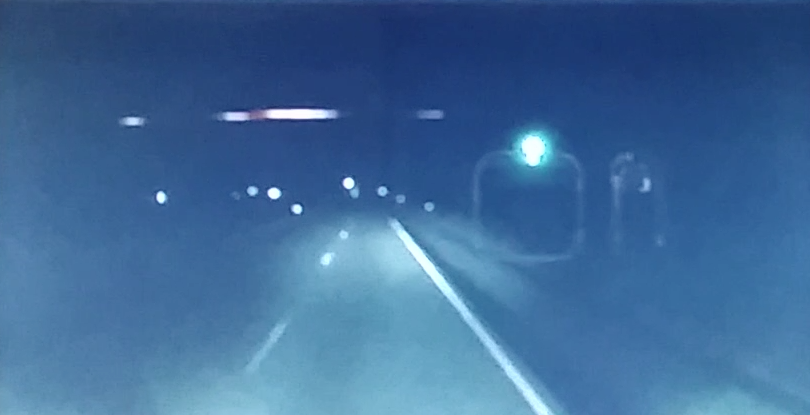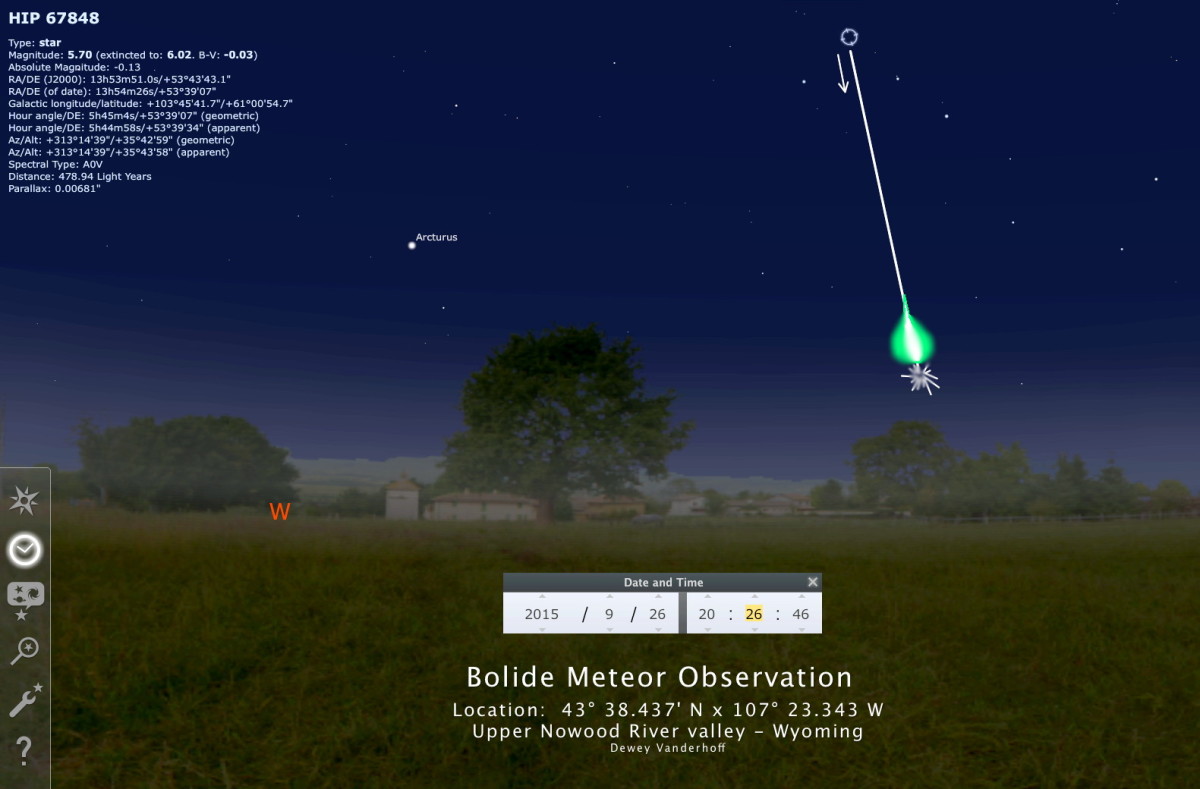"The observed flash was in fact a Bolide meteor, not an Iridium flash or reentering manmade space junk. I saw it plainly from my campsite 28 miles SSE of Tensleep / ~38 miles west of Kaycee on the upper Nowood River," said Dewey Vanderhoff in comments made to Reboot.
"The meteor occurred at 8h:26m :40s PM- MDT. It appeared just above the 'handle' of the Big Dipper between the 1st and 2nd principal stars, and descended rapidly straight down and a little obliquely to the right ( north) . It first appeared 32 ° high in the WNW at an azimuth 309° ( 39° north of due west) . The meteor lasted maybe 3-4 seconds , brightening the entire way. In the last third of the trajectory the meteor became an incandescent green , and exploded just above my relative horizon. There was no sound of concussion in the following 5 minutes or so, as sometimes can be heard."
Vanderhoff provided further context regarding these types of meteors:
"The object was most definitely a Bolide meteor. A bolide is merely a meteor that explodes , very brightly. If conditions are right and the meteor was relatively close , you can hear the sound of the explosion some minutes later. Meteors like this are usually travelling anywhere from 10,000 t0 50,000 mph and they flare then disintegrate many miles above ground."It turns out these types of meteors aren't especially, well, special.
"Bolides are not rare. ANY meteor of any size that makes it all the way to the ground is rare, even though it is estimated that 150 tons of meteroids enter the Earth's atmosphere every day . Most of that is the size of grains of sand , or smaller."Though Vanderhoff didn't get a photo of last Saturday night's meteor, he provided the main graphic as a "drawing based on a screen shot from [his] astronomy planetarium program."





Reader Comments
to our Newsletter